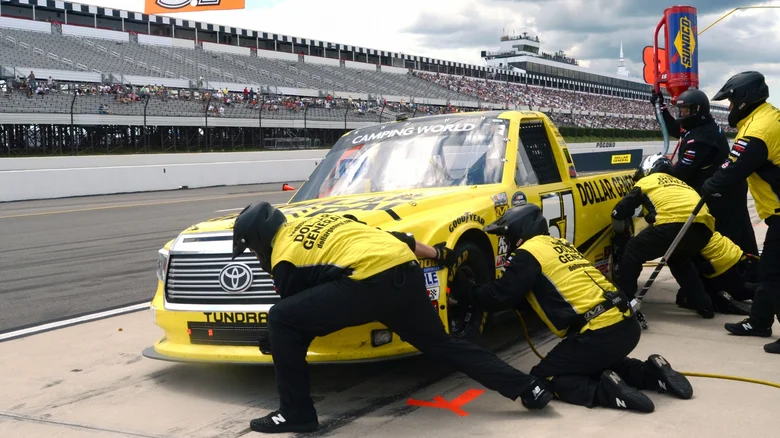
Ever since its founding in February 1948, NASCAR has served American automakers. American automakers’ Lincoln, Oldsmobile, and Plymouth divisions completed the initial season, and in the years that followed, brands like Chevy, Dodge, Buick, and Pontiac also made an appearance in the winner’s circle.
Throughout NASCAR’s extensive and continuous history, international brands were interspersed. The majority of the manufacturers represented were from the United Kingdom; during the 1950s and early 1960s, manufacturers such as Austin-Healey, Aston Martin, Jaguar, and Leyland Motors joined the list. The final international brand to participate in a NASCAR race was MG Motor in 1963. That is, until 2007, when a newcomer prepared to carve out a niche for himself in the American sport, rolled onto the track.
In terms of overall championship victories, Ford and Chevrolet may be in the lead, with Chevy topping the charts with over 70 career wins across all NASCAR series. However, Toyota, the foreign brand that upended one of the biggest spectator sports in the US, rounds out the top three, trailing Ford by only a few victories.
Toyota Enters the Race

When the Toyota Camry was first brought to the market in 1983, it had a small 2.0L four-cylinder engine. It was a charming commuter car, with its boxy design and clean lines typical of the 1980s. When the Camry was first manufactured, nobody could have predicted that, 24 years later, it would be powered by a V-8 and able to compete with two of the most well-known American automakers.
It’s debatable why Toyota entered the 2007 NASCAR season, but it’s impossible to ignore the marketing opportunity. The choice wasn’t taken hastily. Although the Japanese manufacturer finished the 2007 NASCAR Nextel Cup Series with no victories among its eight drivers, it returned to racing in 2008 and participated in the NASCAR Sprint Cup Series. As the season came to an end, Toyota recorded ten driver victories, most of which were attributable to Kyle Busch of Joe Gibbs Racing.
It should come as no surprise that Toyota’s early success infuriated some, but the NASCAR rookie was not deterred from realizing his full potential. Its name quickly spread around the NASCAR track.
Toyota’s Ongoing Success

Even though the Camry made its track debut in the United States in 2007, it wasn’t until the more well-known Cup series that the brand made its debut in a NASCAR race. Five distinct teams competing in the NASCAR Craftsman Truck Series in 2006 were sponsored by Toyota, and their drivers drove Tundra Milwaukee. Toyota trucks have dominated the standings since the 2006 run, winning 13 titles by 2022.
After its victory in 2008, the Camry performed admirably when it returned to the conventional cup series. Kyle Busch guided the manufacturer to victory in the ensuing years, winning the Cup, Xfinity, and Truck Series in 2010 and collecting four checkered flags in 2009. Despite its considerable success in the Cup series, the Japanese manufacturer did not win a title until 2016, when Jimmie Johnson drove the 2015 Camry upgrade.
In 2017 and 2019, Toyota’s drivers won two more championships. The Xfinity Series of NASCAR produced comparable outcomes, with Toyota’s Supra winning four Manufacturer’s titles in 2008, 2009, 2010, and 2016.
The Future of Toyota Racing in NASCAR

Even with the initial backlash from fans and criticism over Toyota’s foreign heritage, the Japanese automaker gradually gained recognition as a strong rival. It intends to stay that way and will make a comeback to the racetrack in 2024 with a redesigned version of its iconic Camry.
The XSE race vehicle, whose body closely resembles the 2025 Toyota Camry XSE, is a streamlined improvement over the popular TRD Next Gen. The XSE has a revised body in addition to a front fascia shaped like a hammerhead, which contrasts with a more subdued rear fascia, a chamfered bumper, and new quarter panel styling.
Given Toyota’s track record with the TRD Next Gen, the company is probably going to stay a fierce rival. Despite its lack of championship victories, which can be attributed to its introduction several years after NASCAR began operations, the makeover of the Camry is expected to energize the team’s drivers and secure more checkered flags.
Also Read: See How The Porsche 911 Has Changed Throughout the Past 60 Years
Share to Others